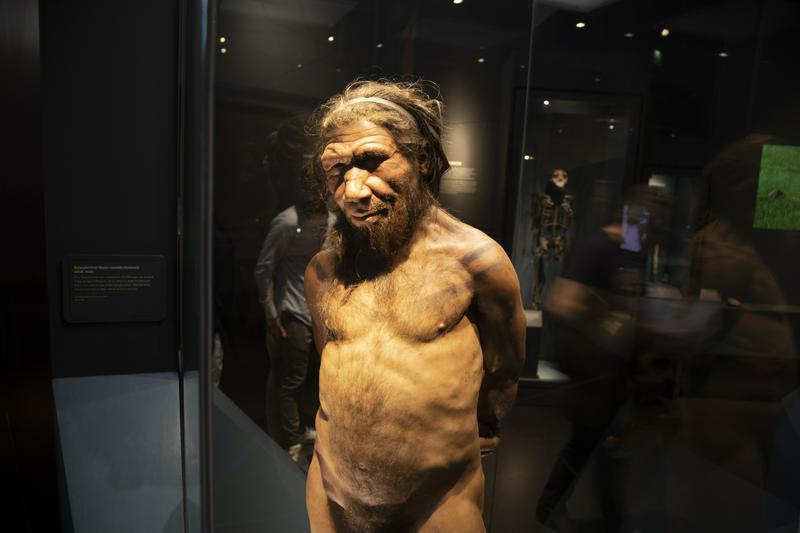Who Were The Neanderthals?
By | July 6, 2019

From 430 to thirty thousand years ago, a different species of human inhabited a wide swath of Eurasia from Spain to Central Asia. Known as Neanderthals from the 1856 discovery of their fossils in the Neander Valley of Germany, they represent an object of fascination for pre-historians.
So what do we know about them? Interestingly, of all the extinct species of humans, we know the most about the Neanderthals since we have more fossils of them than any other extinct species of human. In fact, recent scientific studies show that we may be more closely related to Neanderthals than we once thought.

NeanderTHAL versus NeanderTAL
Let’s set the ground rules. Homo neanderthalensis may be spelled with the TH or just the T, but when pronouncing, the hard T should always be used. The reason: Neanderthal as a description is German for the Neander Valley, which in that region of Germany in the mid-19th century was Neander Thal. In the 20th century, German spelling was standardized and Thal became Tal. Either way, the pronunciation was always the same as the hard T. The TH sound was only used by English speakers who used their own pronunciation of the TH.

What Neanderthals Looked Like
Both modern humans, Homo sapiens, and Homo neanderthalensis had common early human ancestors, such as Homo erectus, but had split off some 500,000 years ago. Neanderthals who inhabited cold, northern latitudes, evolved to their environment. They were compact and stocky. The average height and weight of a Neanderthal male was 5’ 5” and 143 pounds while a female was 5’ 1” tall and 119 pounds. In order to moisten and warm cold air, they had large noses. The face also differed due to a prominent brow ridge as well as a general jutting forward of the central part of the face. Neanderthals had hardly any chin.
Despite their size, slightly shorter than the average Homo sapien, they were much stronger. Their centers of gravity were lower, and they had tremendous arm and hand muscles. A modern human would have no chance in a Greco-Roman wrestling match with a Neanderthal.
Despite these differences, modern artist renderings of Neanderthals show them to be very human looking. If one were to dress in modern clothing and you bumped into them in the office, it might take you a few minutes to realize the difference. You’d be more clued in when the Neanderthal gave you a bone-crushing handshake, however.
One of the more interesting features of Neanderthals is that according to recent studies that many likely had red hair and pale skin. The pale skin is not surprising. In northern latitudes, it was an adoption to allow for the body to produce vitamin D.

Neanderthal Intelligence
Every new study on Neanderthals gives further proof that they were not stereotypical cavemen, but a species of humans of complex intelligence. Their skulls could hold a brain from 1,200 to 1,750 cubic centimeters which is usually larger than modern humans. Of course, size isn’t everything, but artifacts have proven to researchers that Neanderthals made complex tools and mastered fire. Still, the evidence suggests that the larger-brained Neanderthals devoted the extra gray matter to sight and senses while modern humans have more gray matter devoted to social interactions and higher level thinking. This bears out in the archaeological record since Neanderthal tools tended to be more primitive and there is only limited evidence of higher level thinking -- although it does exist to some degree.

Neanderthals Could Probably Speak
Anatomical studies have also shown that Neanderthals possessed the elements for complex speech. Researchers have examined the hyoid bone in Neanderthal neck bones and found that this bone, critical for complex speech. However, this is the best guess since the Neanderthals did not leave any writing or record.

Beliefs
Archaeological evidence shows that Neanderthals cared for their sick and buried their dead. One site shows a Neanderthal remains with the pollen from flowers meaning that the body may have been given a final gift. This implies some sort of spiritual belief. In addition, there is evidence that the Neanderthals created cave art in a site in Spain. This shows symbolic thinking.

Neanderthals Are Not Really Extinct
It has often been contended that Neanderthals went extinct about 30,000 years ago due to being out-competed or killed by modern humans who started migrating out of Africa some 70,000 years ago. Recent genetic studies show there might be a different story and that Neanderthals and early modern humans interbred. Europeans and Asians have about 2% Neanderthal DNA. Indigenous Africans do not have any since their ancestors never migrated out of Africa and interacted with Neanderthals.
If true, then Neanderthals were more likely to be absorbed in the larger populations of Homo sapiens rather than outright slaughter. It is also likely that the Neanderthal DNA was generally bad for early modern humans and impacted fertility, which is why only 2% of European and Asian genomes have Neanderthal DNA. Meanwhile, Neanderthal DNA has also been linked to genetic maladies such as blood cholesterol, arthritis, eating disorders, and even schizophrenia. However, it isn’t all bad – some DNA passed to modern humans prevent certain viral infections.
Of course, you can’t blame all your health woes on Neanderthals since environment and behavior have just as big of an impact.
In other words, don’t throw away your gym membership.

